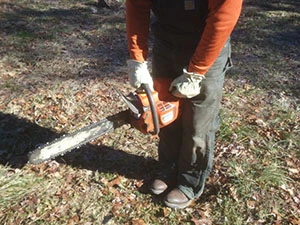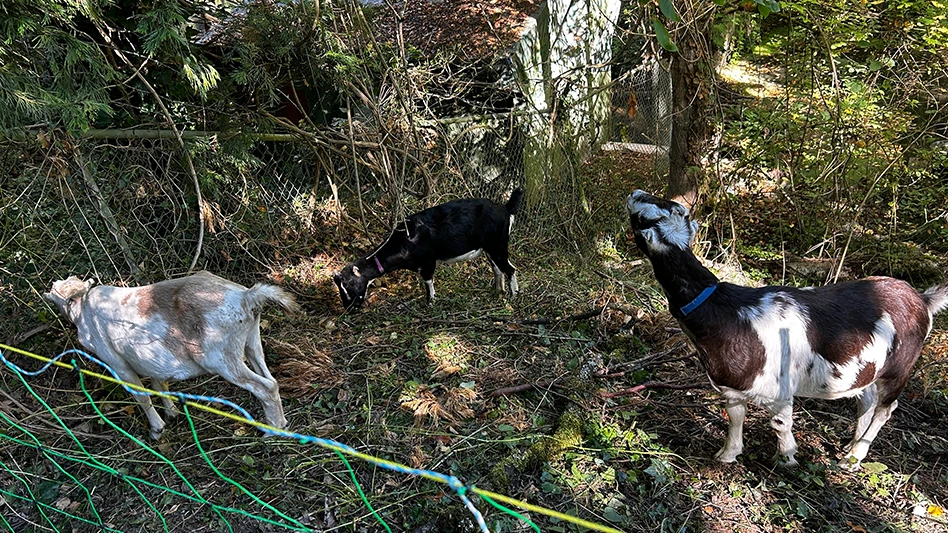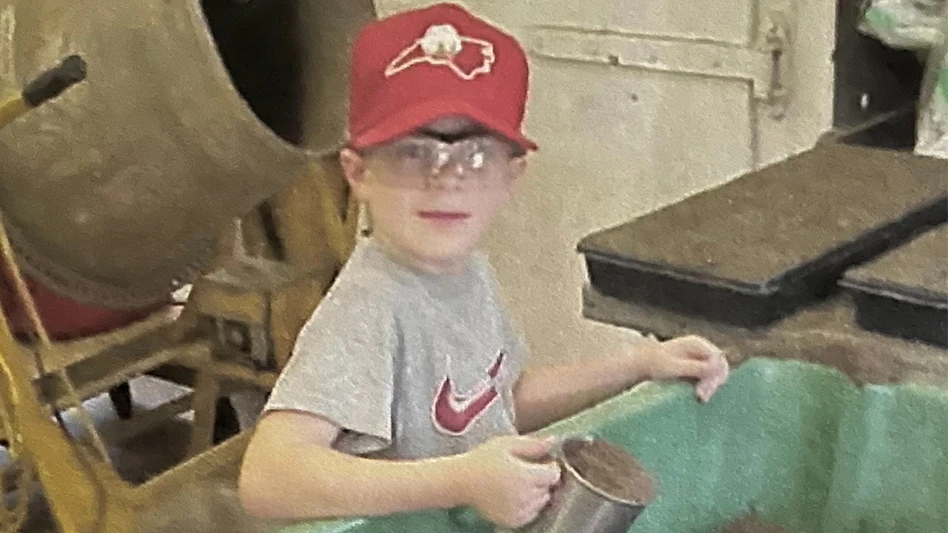
.jpg) |
When World Golf Hall of Fame golfer Greg Norman almost cut his left hand off with a chainsaw last month it made news headlines throughout the golf world and beyond. But Greg’s wasn’t the only chainsaw accident that day. Statistically there are about 40,000 chainsaw accidents requiring medical treatment each year in the United States, that’s more 100 each day! The chainsaw has been called the most dangerous hand tool used. They are readily available and relatively easy to operate; you don’t need a license or certification to use one.
If you’ve ever watched a skilled chainsaw operator they make it look pretty easy—start the saw, pull the trigger to accelerate the chain, and cut away. Oh yeah, it might be tricky to get a tree to fall exactly where you want it, but smaller trees, or limbing up a few branches is a piece of cake, right. Wrong!
Anytime you’re using a chainsaw, no matter how small and trivial the job seems, you are a half a second away from an accident, and most chainsaw accidents result in serious injuries (Greg Norman said he was lucky not to lose his left hand). If you ask veteran chainsaw operators most can tell stories of accidents or near misses.
Almost every golf course maintenance crew has a chainsaw and probably someone who is very good at using it, but do not assume your crew has been trained in safe chainsaw operation. Chainsaw safety should be on your list of regular safety training topics. Make sure you cover these important points.
- Personal Protective Equipment, PPE, includes hearing protection, eye protection--hardhat with face shield and safety glasses is best, chaps, gloves, and sturdy over the ankle work boots. Make sure you have all of this equipment, maintain it properly, and require your crew to wear all of the PPE. Even if you’re not operating the saw, if you are nearby you should be wearing hearing protection and eye protection.
- Go over the saws safety devices and make sure they are all working properly; chain brake, anti-kickback chain, right hand guard, throttle lock, and stop switch.
- How to properly start a chainsaw. There are two safe methods to start a chainsaw; 1) The ground start-- hold the saw on level ground with your foot, make sure nothing is in the way of the bar or chain, grip the handle bar with one hand so that your thumb wraps around for a secure grip. Use your other hand to pull the starter rope. 2) The standing start; place the pistol grip of the saw between your legs above your knees, grip the handle bar in one hand and pull the starter rope with the other hand.
- Never use the “drop start” (holding the saw in one hand and the pulling rope in the other, dropping the saw while pulling the starter rope away) You may see experienced operators start a saw this way but it is not recommended because the saw is not in a stable position when it starts.
- Before falling a tree assess the situation; consider terrain, weather, other trees, buildings, other people and animals, utility lines.
- How to avoid kickbacks. One of the major safety problems with a chainsaw is kickback. Kickback is the result of the physics of a spinning chain moving around the tip of the bar. When the chain contacts something in upper ¼ of the tip of the bar it causes a lightning fast movement of the bar back toward the operator. This top1/4 of the bar is called the kickback tip, do not allow it to contact another log while cutting, and always hold the saw slightly left or right from
- Handling binds takes a lot of experience but you need to be aware that gravity will cause the unsupported part of a log or branch to move and sometimes snap back and hit someone or roll onto them.
- This is really just the beginning, it takes a lot of knowledge and experience to safely operate a chainsaw.
Here are a few more chainsaw safety do’s and don’ts:
Do…
- Use ALL PPE
- Use all necessary tools
- Use proper size saw and bar
- Use two hand grip
- Use secure stance and footing
- Check your escape routes
Don’t…
- Work before sizing up the situation
- Remove safety features
- Use poorly maintained saw
- Walk with saw running
- Leave a tree partially cut and still standing
- Buck or limb a tree from downhill side
And finally the four NEVERS
- Work standing on a ladder or in a loader bucket
- “Drop start”
- Cut above shoulders
- And the single most important rule when operating a chainsaw Never work alone
Latest from Golf Course Industry
- Albaugh receives registration for chlorantraniliprole
- Honored by the association he helped expand
- The Carolinas GCSA Conference and Show: 5 W’s preview
- A great game. A sustainable game
- Envu welcomes new campaign activation manager
- Beyond the Page 61: An apprenticeship roundtable
- Epoch Science introduces Plant Fitness turf product line
- Pennsylvania preservation





